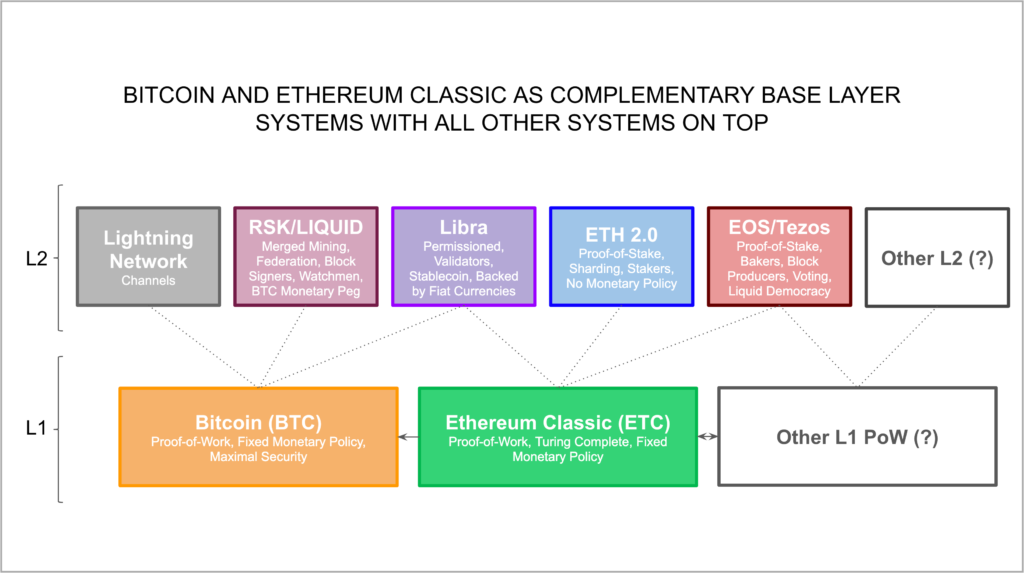You can listen to or watch this article here:
The highest purpose of blockchains, such as Bitcoin and Ethereum Classic (ETC), is trust minimization, which means to prescind of trusted third parties when managing people’s and businesses’ money, property, and agreements.
This is because trusted third parties, such as financial institutions and tech companies, are security holes as they hold our money and information, but they have consistently showed that they can be hacked, make mistakes, or even commit outright fraud.
Bitcoin’s brilliant invention was to recreate digital scarcity, as in precious metals in the physical world, using proof of work as the consensus mechanism, and a fixed monetary policy as a way to regulate supply.
Ethereum Classic’s brilliant additional and complementary invention was to enable smart contracts by using the Bitcoin model as the base, and adding a distributed virtual machine, a programming language, and the gas system to the system’s stack.
The Ethereum Classic Trinity:

In summary, Ethereum Classic is composed of a trinity of key parts that, together, achieve an incredibly valuable system:
1. Smart Contracts:
Smart contracts are decentralized programs on the peer-to-peer network that enable contracts between people and businesses, machine-to-machine interactions without the need of risky and costly cloud services, and decentralized applications for finance and other use cases.
2. Proof of Work:
Proof of work is the most secure consensus and sybil resistant mechanism in computer science. It provides a security barrier, so attackers can’t take control of the ledger and decentralized programs; unforgeable costliness, so the underlying currency cannot be falsified; and a proxy for value, for the currency, in the economy at large.
3. Fixed Monetary Policy:
ETC’s fixed monetary policy is the only method to minimize the dependence of currency holders’ property rights on central bank committees, politicians, or core developer teams, who may be biased or tempted to change or increase supply creating uncertainty in its value.
Due to this trinity of components ETC will very likely become critical infrastructure in the future, and grow to occupy a central position, besides Bitcoin, at the base layer of the blockchain industry technological stack.

Bitcoin was invented by Satoshi Nakamoto. Ethereum Classic is the original Ethereum blockchain, which was invented by Vitalik Buterin. The idea of the “trinity” and shamrock ☘️to describe the three key components of ETC is inspired by ETC’s traditional emerald green color branding, combined with the history and tradition of St. Patrick.
Code Is Law
